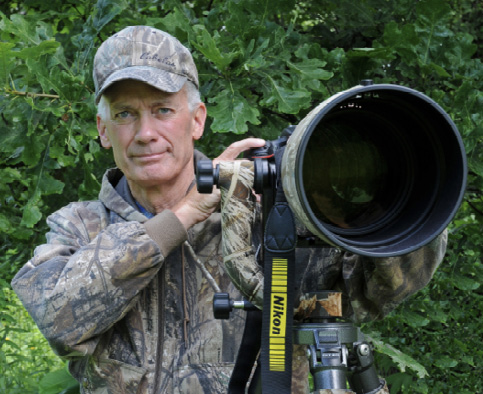Though Ken Saunders numbers hiking and nature study among his primary interests, nature photography is his passion. Photography, in his mind, dovetails with all his other interests.
Saunders got his first camera, a Kodak 104 Instamatic, when he was around seven years old. This camera used a 126 film cartridge and featured a connector for the new (at the time) flashcube. The 104 retailed for $15.95 when launched in 1963. Kodak sold 60 million of the various models of “Instamatic” cameras in the 1960s and 1970s. Back then, Saunders enjoyed taking snapshots of family, friends, and travel destinations during those early days.
Finally in 1985, he purchased his first (and only) 35mm film SLR (single lens reflex) camera—a Pentax Super Program, plus several Pentax lens. Saunders started focusing on nature (flora and fauna), scenery, and some macro photography consisting mostly of flora. He did majority of his photography during this time on trips to various national parks. Initially Saunders used print film, but transitioned later to slide film.
Saunders began his digital experience in 2003 with a Nikon Coolpix 5700, a high end digital camera that was not a SLR. The fixed lens in the body gave him the equivalent of a 35-280mm zoom. Saunders also purchased a Nikon adaptor, a Nikon 28mm wide angle converter, and a Nikon 1.5x telephoto converter. He continued to focus on nature photography, including macro photography. With the adapter and the 1.5x teleconverter installed, the equivalent focal length became 52.5-420mm. This improved his ability to capture wildlife and, as he puts it, he “quickly became addicted to the longer focal length!”
In 2006 Saunders purchased his first DSLR (digital single lens reflex)—a Nikon D200 and several Nikkor (Nikon) lens. He claims that the learning curve changed dramatically for him as he made use of his newest digital equipment technology, which had the added benefit of eliminating the purchase and loading of film. With this new suite of equipment, Saunders was willling to branch out, trying multipe settings and taking lots of shots. Since 2006, he has upgraded camera bodies several times, added a couple of lens, and obtained a set of teleconverters. As he puts it, “There is no going back!”
While Saunders has spent considerable time over the years photographing nature in northwest Wyoming, the vast majority of his photography is captured in Iowa, and usually not too far from Grinnell. All the photos for this feature were captured within a 28-mile radius (42-miles maximum driving distance) of Grinnell.
Saunders hopes that his photography will further the cause of environmental education, perhaps stimulating those who are not familiar with the gifts of nature, or further stimulating those who already are. Saunders feels that if one becomes more intimate with nature, one is likely to realize these gifts, perhaps becoming passionate about them, and certainly becoming interested in not losing them. He feels his photographycan bring attention to that in the natural world which is threatened, saying: “It would be difficult to feel loss if one is not aware of what they are losing.”
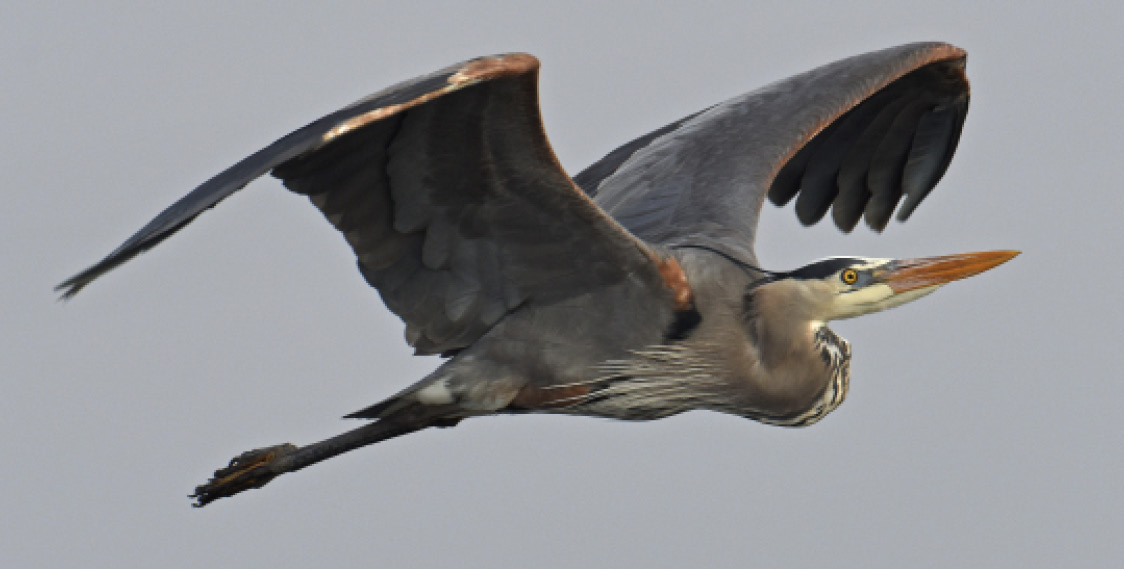
This great blue heron was captured April 18, 2015, at Otter Creek Marsh Wildlife Management Area, in Tama County, Iowa
Great Blue Heron
(Ardea herodius)
Although this majestic gray wading bird—the largest of the North American herons—is four feet tall, the fact that it has hollow bones (like all birds) means that it weighs only five or six pounds. It has long legs, a sinuous neck, and a thick dagger-like bill. Standing, it holds its neck erect or rests it on its shoulders. In flight, its neck is tucked in an “S” shape, its long legs trailing out behind and its wingbeats deep and slow. Its voice is a deep, harsh croak. Breeding adults gather in colonies or “heronries,” which can feature 500 or more stick nests in trees high off the ground. Hunting, great blue herons stand motionless, scanning for prey, or wade belly deep with long, deliberate strides. They eat nearly anything within striking distance including fish, amphibians, reptiles, small mammals, insects, and other birds, and also forage in grasslands and agricultural fields.
Ring-billed Gull
(Larus delawarensis)
This bird measures 19 inches from tip of bill to tail tip. Adults are clean gray with a white head, body, and tail, and black wingtips spotted with white. Their yellow legs and yellow bill with black band distinguish them from other species, and they appear inland more commonly than most gulls. They fly lightly on easy flaps of their slender wings, circling and hovering, looking for food. They haunt reservoirs, lakes, ponds, streams, plowed fields, landfills, parking lots, shopping malls, and—in coastal areas—estuaries, beaches, mudflats, coastal waters, bays, docks, wharves, and harbors.
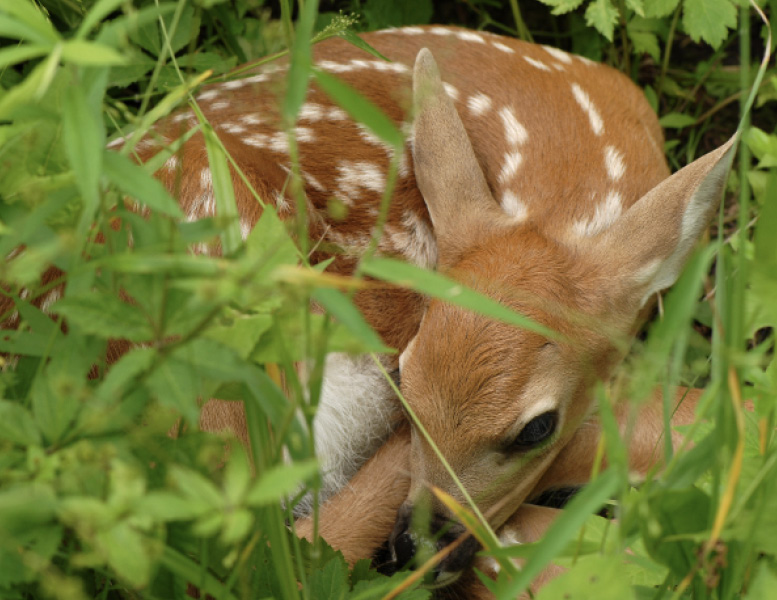
This white-tailed deer fawn was captured June 10, 2007, at Sugar Creek Audubon Center in Jasper County, Iowa
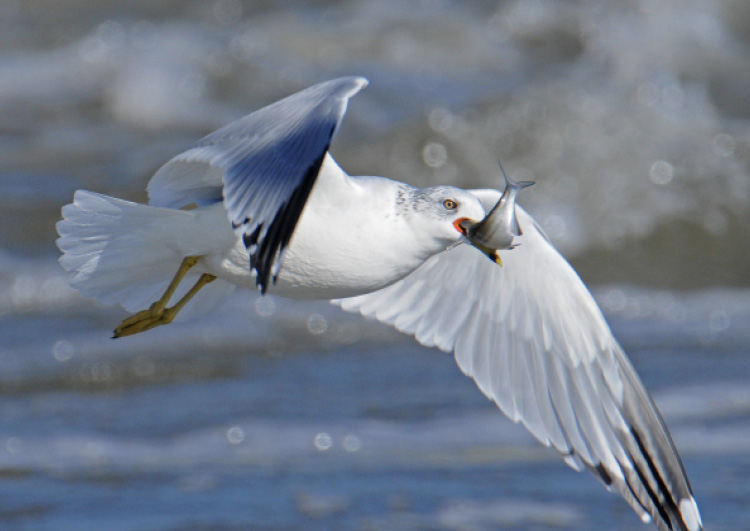
This ring-billed gull was captured November 15, 2010, on the Des Moines River below Red Rock Dam in Marion County, Iowa
White-tailed Deer
(Odocoileus virginianus)
White-tails are the smallest North American deer species. Bucks have antlers which are shed in winter and regrown in spring. Fawns have a reddish-brown coat with white spots. Deer’s diet includes green plants, fruit, alfalfa, lichens, and fungi in the summer. In fall and winter, they eat nuts, corn, and woody vegetation. White-tails inhabit river valley bottomlands, farmlands, brushy areas, woodlands, savanna, prairie, sage communities, and foothill grasslands.
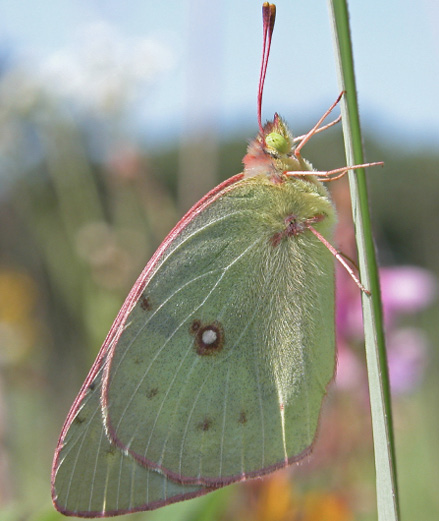
This clouded sulfur butterfly was captured July 15, 2006, at Grinnell College’s Conard Environmental Research Area (CERA) in Jasper County, Iowa
Clouded Sulfur
(Colias philodice)
The clouded sulfur is one of our most common butterflies. Their wingspans range from one and one-half to two and three-quarters inches, and they almost always perch with their wings closed. Clouded sulfurs have multiple (three to four) broods and fly from early spring to late fall. The clouded sulfur is one of the latest flying butterflies that does not hibernate overwinter as an adult. Their flight is slightly erratic and direct. Adults drink nectar from many different flowers and they obtain moisture from water, mud, and animal dung. Larval foodplants include black locust, white clover, alfalfa, and other legumes. Clouded sulfurs inhabit open areas especially hayfields, prairies, and lawns and along roadsides near these habitats.
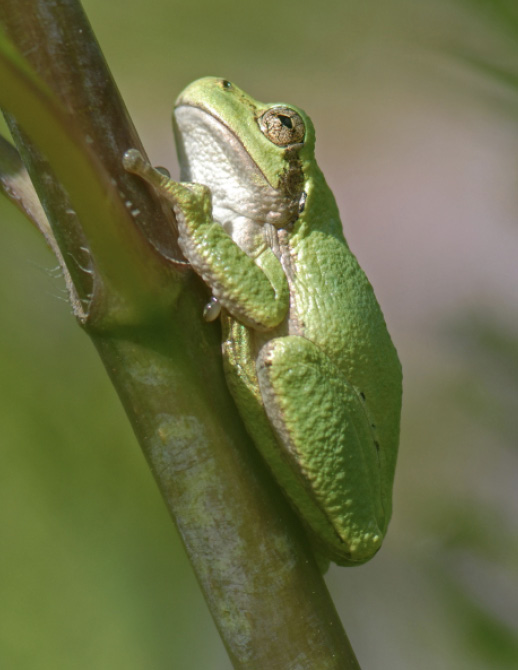
This gray tree frog was captured August 16, 2008, on private property in rural Jasper County, Iowa
Gray Tree Frog
(Hyla versicolor)
These are relatively small frogs—typically an inch-and-a-half to two inches—compared to other North American frog species, with females usually larger than males. Their skin has a lumpy texture, and they vary in color, owing to their ability to camouflage themselves from gray to green, depending on the substrate on which they are sitting. The degree of mottling varies. They can change from nearly black to nearly white. They change color at a slower rate than a chameleon. The frogs have bright yellow patches on their hind legs which are normally only visible when the frog is jumping. The gray tree frog is most common in forested areas as it is highly arboreal. These frogs rarely ever descend from high tree tops except for breeding. The gray tree frog ranges from southeastern Canada to the eastern United States as far west as central Texas and Oklahoma.
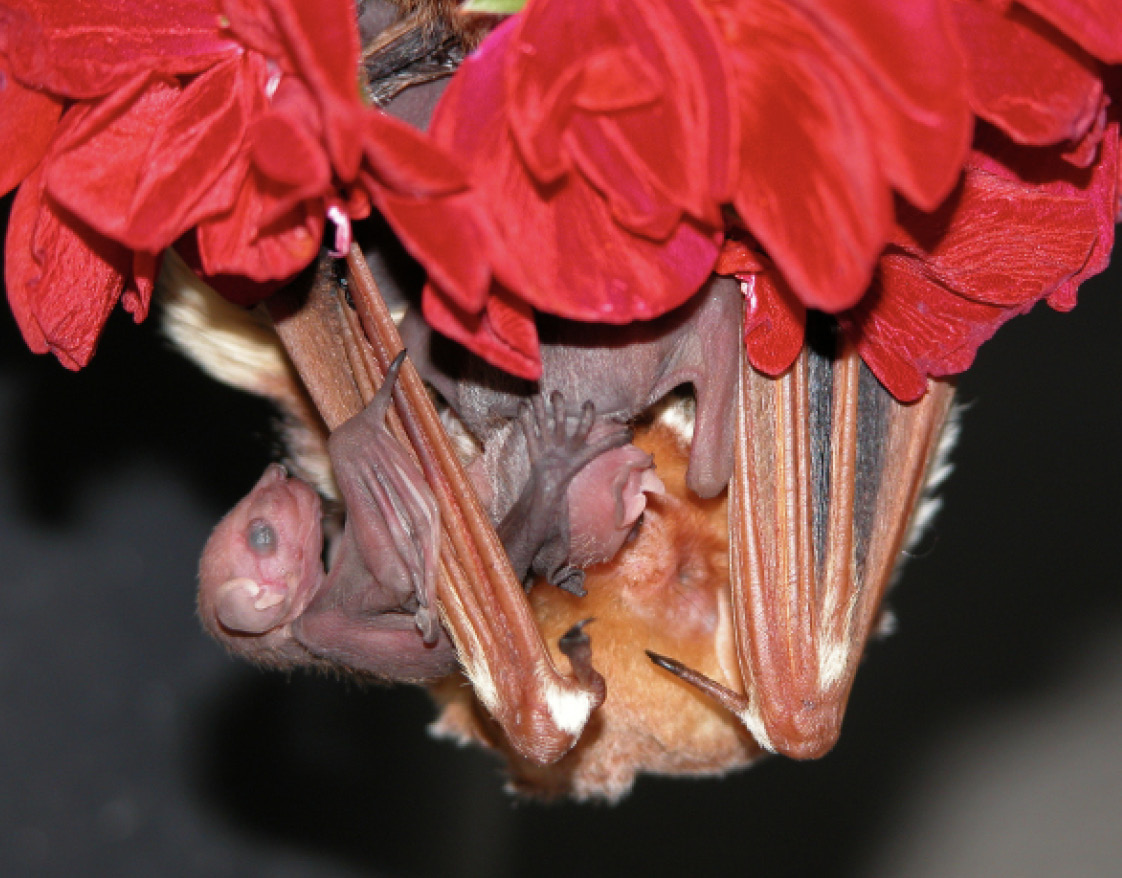
This female eastern red bat with her young was captured June 27, 2003, in the back yard of Saunders’ property in northwest Grinnell, Iowa
Eastern Red Bat
(Lasiurus borealis)
The red bat is a tree bat three-and-a-half to four-and-a-half inches long, with a 13-inch wingspan. It has small rounded ears and long, silky angora-like fur ranging from red to golden brown. The female red bat is the only bat with 4 teats. Most bats have only a single baby, but the red bat gives birth to two to four young in early summer. The newborn are born hairless, and will hang on to their mother with one foot while hanging onto a perch with the other foot. The young will fly when they are three to five weeks old and are weaned a few weeks later. At night, the female will leave her young to feed. This bat is a very fast flyer and often follows the same path every night. It is insectivorous and its diet consists of beetles, moths, ants, leafhoppers, planthoppers, flies, and other insects. The red bat inhabits forests, forest edges, and hedge rows. It usually roosts in deciduous trees, but will sometimes roost in coniferous trees.


